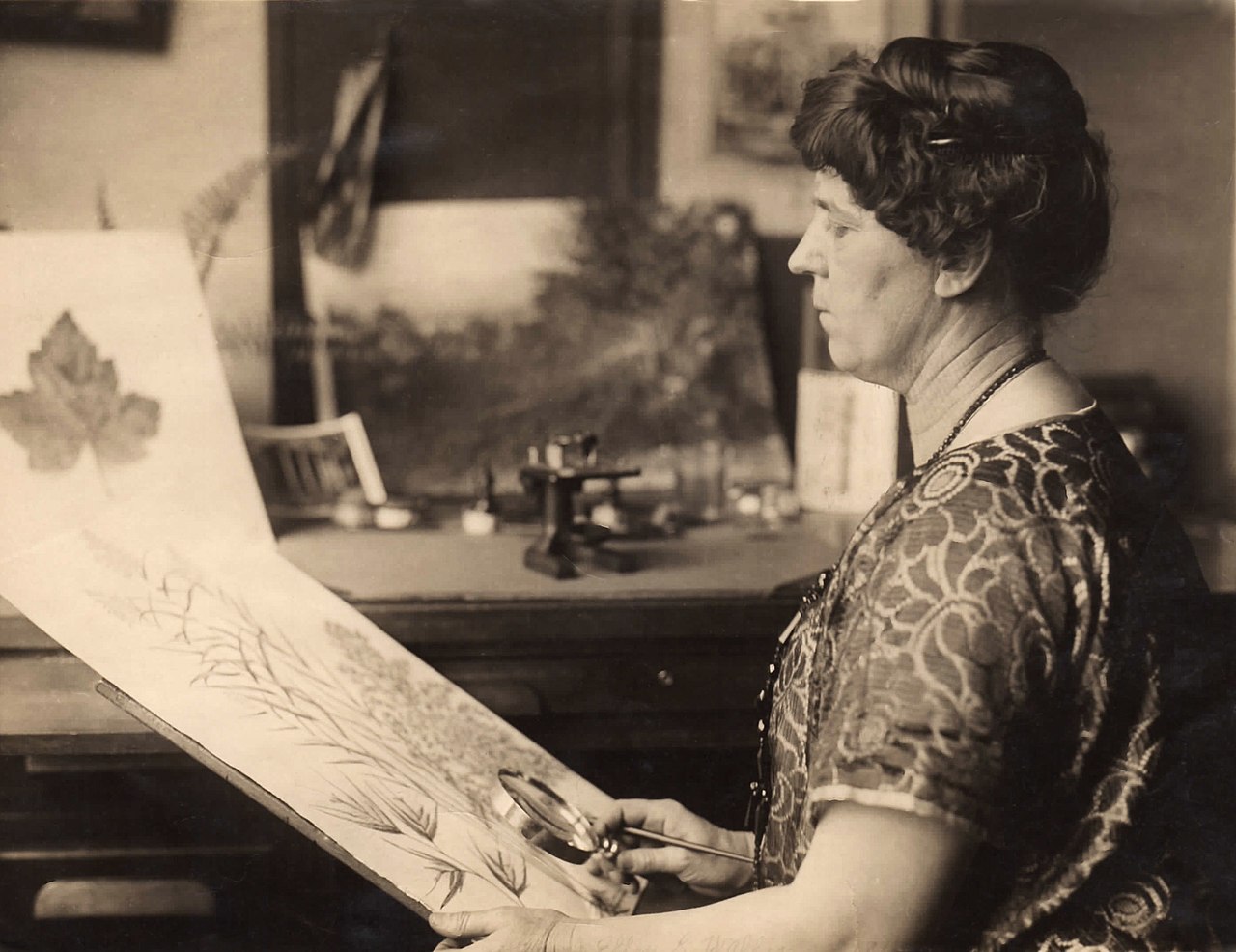Your cart is currently empty!
The Art of Ellen Isham Schutt: Celebrating Nature Through Art

Ellen Isham Schutt (1873–1955) was an artist whose delicate watercolor paintings captured the beauty of nature with stunning precision. Though her work was originally created for scientific purposes, it has endured as a testament to the artistry behind botanical and pomological (fruit-related) illustration. Today, Schutt’s paintings are celebrated not only for their scientific accuracy but also for their quiet elegance and timeless beauty.
Early Life and Artistic Journey
Ellen Isham Schutt was born in Arlington, Virginia, in 1873. Little is known about her early life, but her talent for art and attention to detail led her to a career in scientific illustration. During a time when women had limited opportunities in professional fields, Schutt’s work set her apart. Her skill in capturing the delicate textures and subtle color variations of plants and fruits earned her a place at the United States Department of Agriculture (USDA) in 1904.
At the USDA, Schutt worked as a botanical artist, creating detailed watercolors of fruits and plants for the Bureau of Plant Industry. Her illustrations became part of the USDA’s Pomological Watercolor Collection — a vast archive of paintings used to document different fruit varieties grown across the country. These paintings were essential for scientific records, helping farmers and scientists identify species, track diseases, and improve crop quality.

The Art of Observation
What made Schutt’s work exceptional was her ability to observe and translate the natural world onto paper with incredible accuracy. Each watercolor painting captured the fine details of fruits — the blush of a peach, the delicate veins on a leaf, the subtle sheen on an apple’s skin. Her work combined scientific precision with an artist’s eye for beauty.
Schutt painted hundreds of fruit varieties, from apples and pears to cherries and citrus fruits. Her technique involved carefully layering translucent watercolor washes to build depth and texture. She paid close attention to light and shadow, ensuring each fruit appeared lifelike. Her paintings weren’t just representations of fruit; they were portraits, each with its own unique character and charm.
A Pioneer in Her Field
Schutt was part of a small group of women working in scientific illustration at the time. Alongside artists like Deborah Griscom Passmore, she helped set the standard for pomological art. Her contributions came during a period when women’s roles in science and art were often overlooked, making her achievements even more significant.
Her work for the USDA lasted over a decade. During that time, she created some of the most beautiful and scientifically accurate fruit illustrations in the collection. These paintings were used in scientific reports, agricultural bulletins, and exhibitions, quietly influencing both the art and science worlds.
Legacy and Modern Appreciation
After leaving the USDA, Schutt’s work faded into obscurity for a time. However, the digital age has brought new life to her paintings. The USDA’s Pomological Watercolor Collection has been digitized and made publicly accessible, sparking a renewed appreciation for Schutt’s art.
Today, her watercolors are admired as much for their aesthetic beauty as for their scientific importance. Prints of her fruit paintings now adorn homes, cafes, and art galleries. The rise of “cottagecore” and other nature-inspired aesthetics has further increased the demand for her work as statement pieces.
Her paintings resonate with modern audiences because they offer a quiet celebration of nature’s beauty. Each piece invites viewers to slow down and appreciate the intricate details of the natural world — a sentiment that feels especially meaningful in today’s fast-paced, digital society.

Celebrating Nature Through Art
Ellen Isham Schutt’s art is a reminder that science and art are not so different after all. Her work required patience, precision, and a deep appreciation for the natural world. Each brushstroke was an act of discovery and celebration — capturing not just what fruit looked like but what made each variety special.
Her legacy lives on through the Pomological Watercolor Collection, where her paintings continue to inspire artists, scientists, and nature lovers alike. Schutt’s art is more than documentation; it’s a tribute to the quiet elegance of nature and the power of observation.
In a world where technology often distances us from the natural world, Schutt’s paintings are a gentle invitation to pause and appreciate the beauty around us. Whether displayed in a museum, printed on a wall, or admired in a digital archive, her art remains a timeless celebration of nature.
Ellen Isham Schutt may have started as a scientific illustrator, but her work has become so much more. It stands as a testament to the art of seeing, the art of patience, and the art of nature itself.
Leave a Reply